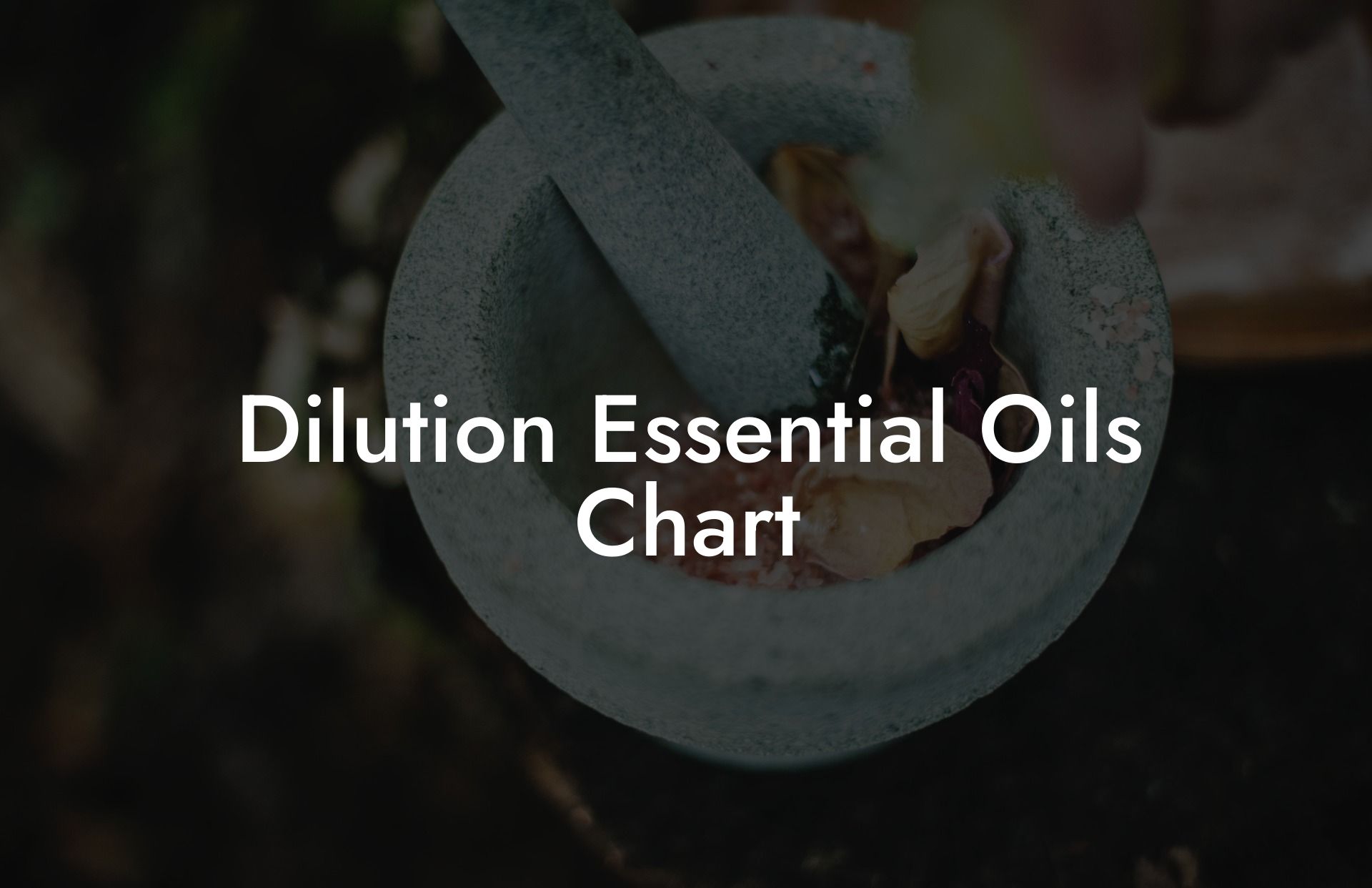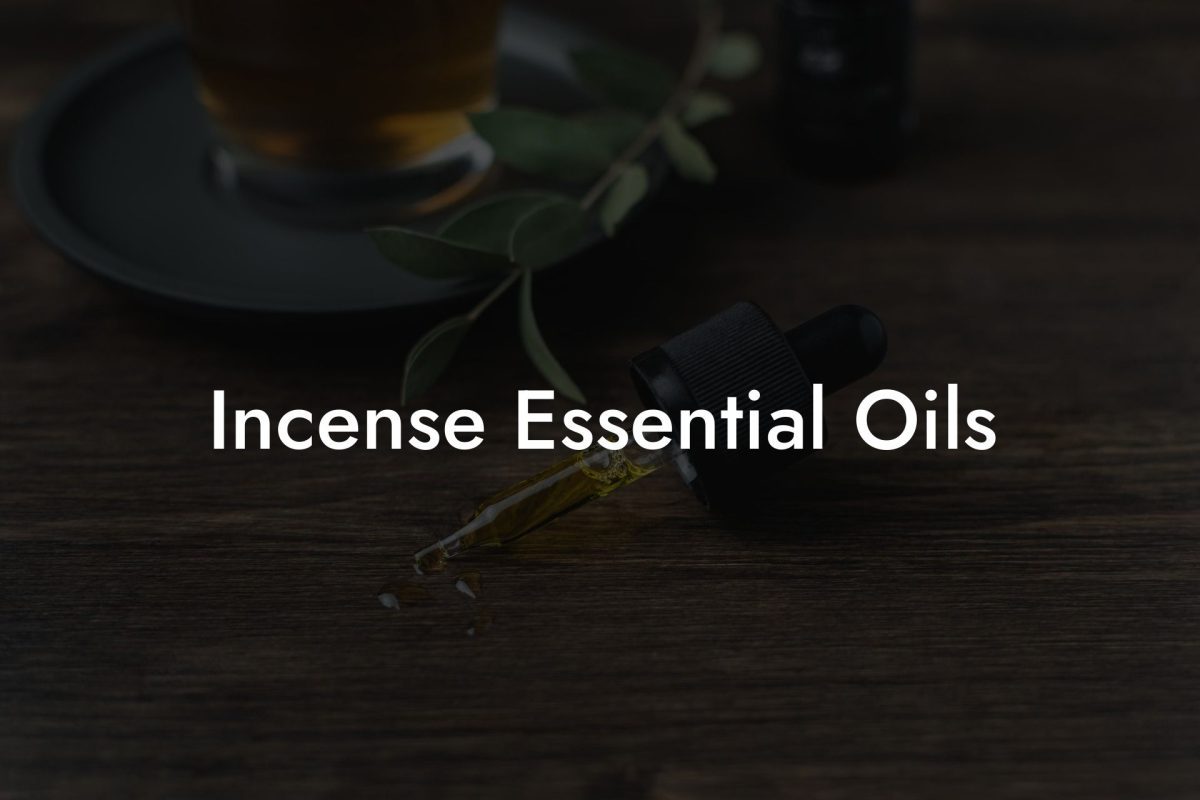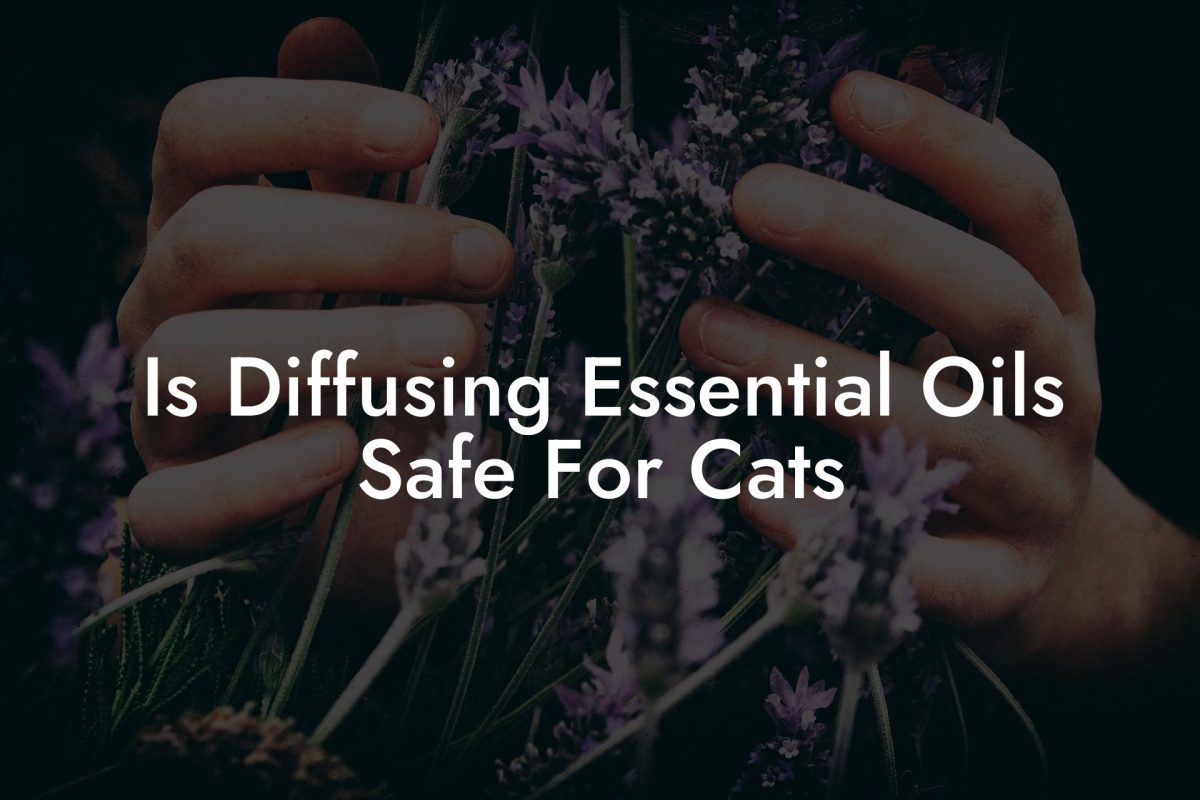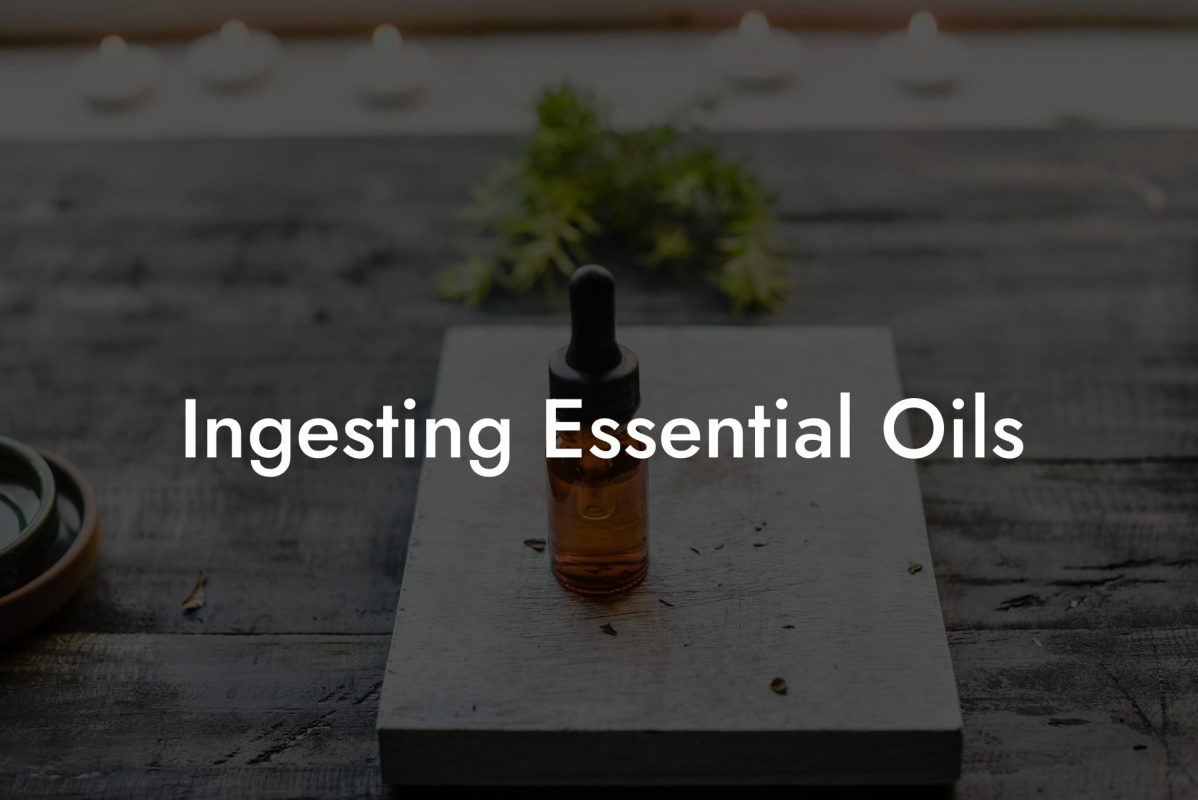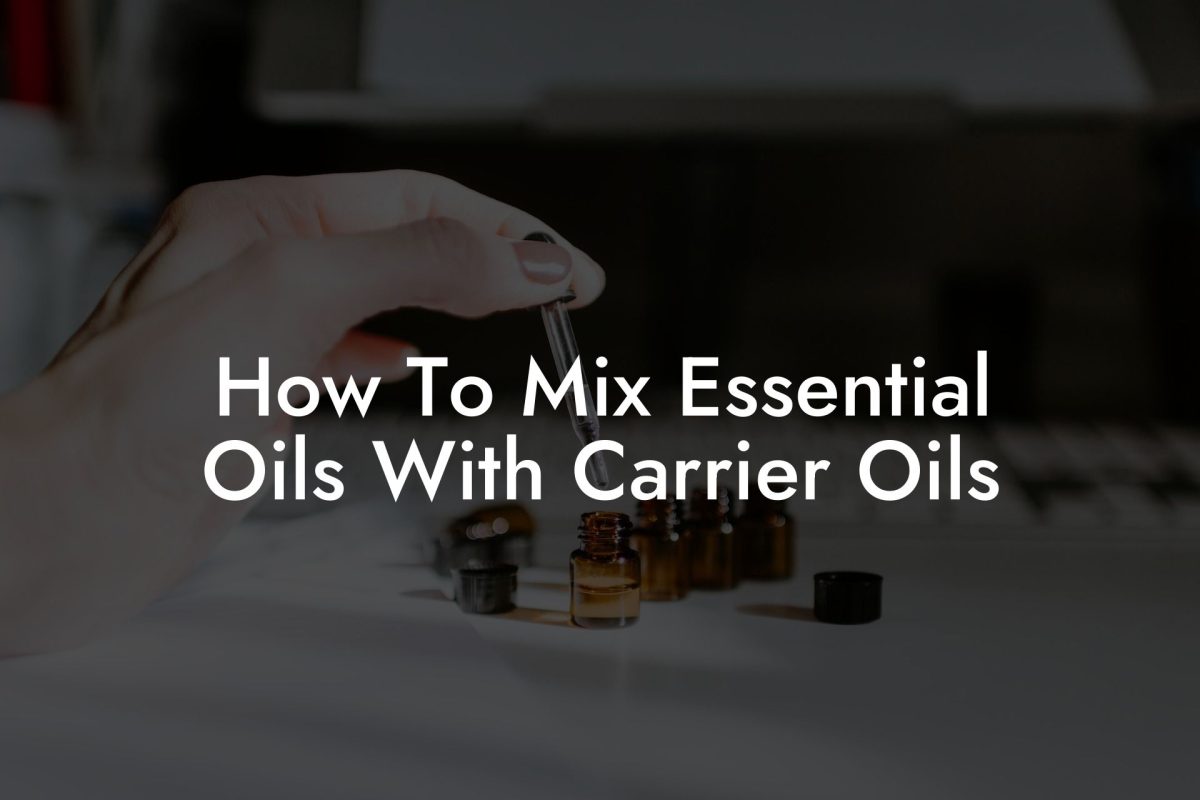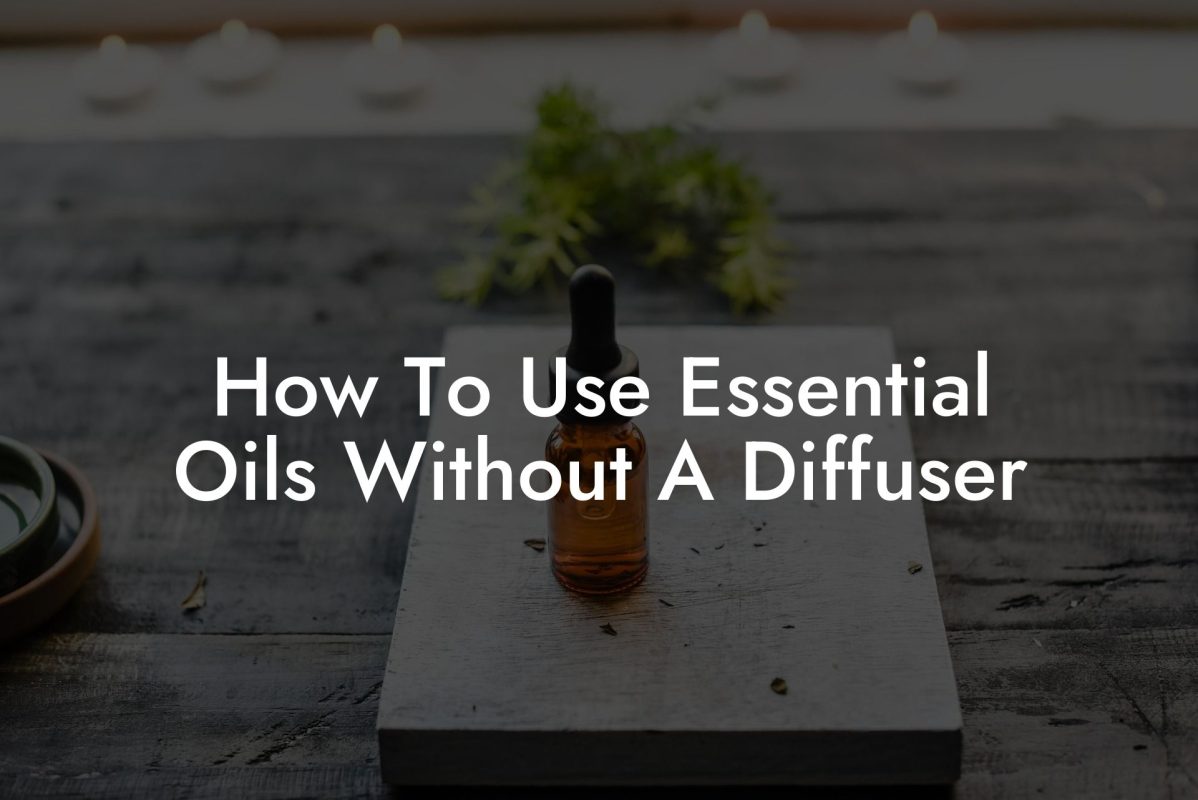Are you interested in learning how to safely dilute essential oils for various applications? We have created a comprehensive dilution essential oils chart to help guide you through the process. By understanding proper dilution techniques, you can ensure that you are using essential oils safely and effectively. In this article, we will cover the basics of essential oil dilution, explore different carrier oils, and provide you with a dilution chart for easy reference.
Table of Contents
Why is Dilution Important?
Diluting essential oils is an important step for safe and effective usage. Essential oils are highly concentrated plant extracts, and using them undiluted can cause skin irritation, sensitization, and other negative reactions. Dilution allows you to fully enjoy the benefits of essential oils while minimizing the risk of adverse effects.
What are Carrier Oils?
Carrier oils are vegetable oils derived from the fatty portion of a plant, usually from the seeds, nuts, or kernels. They are used to dilute essential oils and help carry them onto the skin. Using carrier oils not only promotes safety, but also enhances the efficacy of essential oils by allowing them to absorb more effectively into the skin.
Some popular carrier oils include:
- Coconut oil
- Jojoba oil
- Almond oil
- Avocado oil
- Argan oil
- Grapeseed oil
Choosing the Right Dilution Ratio
Essential oil dilution ratios depend on the application, age or health of the individual, and the specific oil being used. Below are general guidelines to help you choose the appropriate dilution ratio:
- 0.5-1% Dilution: Recommended for children, the elderly, or those with sensitive skin. This is also a good starting point for facial applications.
- 2-3% Dilution: Commonly used for general adult applications such as massage oils, lotions, and body oils.
- 5-10% Dilution: Used for more targeted application on smaller areas, such as for muscle strains or localized pain relief.
- 25% Dilution or Higher: Reserved for short-term use under the guidance of a qualified professional.
Dilution Essential Oils Chart
Below is a chart to help you quickly determine the correct dilution ratio for various amounts of essential oils and carrier oils:
| Dilution | 1 mL EO | 5 mL EO | 10 mL EO | 15 mL EO | 30 mL EO |
|————|———|———|———-|———-|———-|
| 0.5% | 1 drop | 5 drops | 10 drops | 15 drops | 30 drops |
| 1% | 2 drops | 10 drops | 20 drops | 30 drops | 60 drops |
| 2% | 4 drops | 20 drops | 40 drops | 60 drops | 120 drops |
| 3% | 6 drops | 30 drops | 60 drops | 90 drops | 180 drops |
| 5% | 10 drops | 50 drops | 100 drops | 150 drops | 300 drops |
| 10% | 20 drops | 100 drops | 200 drops | 300 drops | 600 drops |
Dilution Essential Oils Chart Example:
If you wanted to create a 2% dilution of lavender essential oil in a 10 mL roller bottle, you would simply refer to the chart and find that 2% dilution for 10 mL of essential oil requires 40 drops. You would then add 40 drops of lavender essential oil to your roller bottle, and fill the rest of the bottle with a carrier oil like jojoba or almond oil. Close the bottle, shake it gently, and it is ready to use.
We hope this dilution essential oils chart proves to be a valuable resource for you in your journey with aromatherapy and essential oils. Remember, proper dilution is essential for safety and optimal benefits. Don’t hesitate to share this guide with your friends and family so they can experience the wonders of essential oils safely as well. Be sure to explore other guides and the range of essential oils and products available from Oshu Oils to start enjoying the benefits of aromacology in your everyday life.

